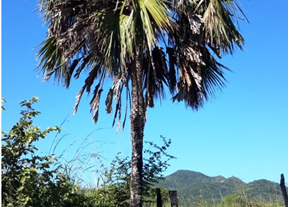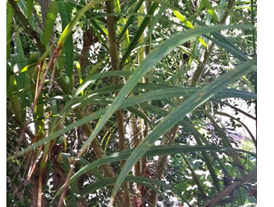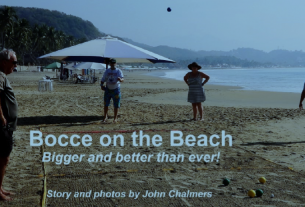By John Chalmers on the July 2020 Edition
There is no lack of things to do and see in the Manzanillo area of beautiful México! A seafood dinner at a favorite restaurant, joining friends for a scenic hike, enjoying the beaches and sea, shopping at the colorful markets, touring the Vive Plants orchid farm and the botanical Ola Brisa Gardens, and photographing birds at the beach and lagoons all add to enjoyment of the area.
Less than an hour’s drive are the towns of Barra de Navidad and Melaque with their own special charms, a visit to the turtle sanctuary, or a day on the beach at Cuastecomates. Ninety minutes away is the state’s capital, Colima, and from there a short drive leads to the charming Magic Town of Comala. A Pueblo Mágico, or Magic Town, is so designated by Mexico’s Secretariat of Tourism for its beauty, architecture, traditions, culture, arts and crafts.
The more I see of México, the more I want to know about it! A five-day/four-night tour to Morelia, a sanctuary of the Monarch butterflies, and a stay in historic towns completely matched my desires! It was too much for a single story, so I described the first two days – Morelia and the Monarchs – in the June issue of the Manzanillo Sun.
This story begins when our tour group boarded our luxury bus to depart from Morelia on a trip that would include three Magic Towns – Tzintzuntzan, Pátzcuaro and Santa Clara del Cobre. An hour later, we arrived at the ancient archeological site of Tzintzuntzan, the capital of the Purépecha people who arrived in the area by Lake Pátzcuaro in the 12th Century. Our first stop was at the archeological site that is the location of the massive stone structures built before the Spanish conquest of 1519-21.
I admired the precision of the work that went into building the huge structures and semi-circular yácatas, the pyramids built hundreds of years ago. I always feel privileged to stand in awe and walk the space once occupied by ancient people, admiring the traces of their civilizations.


In addition to the surviving stone structures, a new stone museum at the site was opened in 2014 and displays artifacts found there.
Next stop was at Tzintzuntzan itself, a town of some 13,000.
There we were exposed again to history, and to the many products that tempted us in the markets. First, we visited the former monastery complex of San Francisco, which dates from the 16th Century, again stepping back in time for the experience. That was followed by checking out the arts and crafts in the markets, which always fascinate me with the workmanship in a wide array of products.
The trip through history continued on our next stop, Pátzcuaro, where we checked into the hotel, then had lunch and were taken on a walking tour by Ofelia, our guide from Mex-Eco Tours. Notable was that, like other places in the state of Michoacán, buildings were painted in red and white, with red and black lettering for signage painted to identify the names. No bright neon signs or flashing lights to be seen above the doorways or in the windows!
On foot we were able to see much of the central area, starting from the central park and ranging from historic structures and cobblestone roads to a high point providing a view of the town. Again I looked in wonderment at the historic buildings and enjoyed the cultural artifacts of Mexican people and traditions.
In this full day of travel and sightseeing, the next stop was San-ta Clara de Cobre, known for its production of items made from cobre (copper). Once mined in the area from the mid-1500s, copper from the mines was exhausted by the mid-19th century.
Today, copper arrives as recycled copper wire and cable. Thus the tradition of making products from that metal continues, after the art was revived some 75 years ago. Visitors now see a mind-boggling display of copper products ranging from items as small as earrings to huge pots and gorgeous enameled vases. Our tour included a workshop to see copper being heated and then shaped into a large bowl.

After a dinner at a restaurant of our choice, where many of us ended up at the same place, we stayed in Pátzcuaro at the Ho-tel Casa del Refugio. Next morning, we had the option of an-other walking tour or time on our own to soak up the character of the town or visit the shops and public buildings.
After a leisurely morning in town, a drive of less than an hour took us to the small town of Capula, known for its production of Catrinas, the skeletal female figurines in long gowns and wide hats. Although the Catrina figure is now associated with Mexico’s celebrations of Día de los Muertos, or Day of the Dead, its origins go back to a political cartoon by José Guada-lupe Posada 110 years ago.
A famous painting by Diego Rivera, whose face appears on the 500-peso bill, featured La Calavera Catrina and led to its popular appearance in Mexican culture and, less than 40 years ago, sculptor Juan Torres first produced the skeleton lady and after he established a workshop in Capula, the town became known for its production of Catrinas.
Today, the skeletal figures are not only of the slender female, but all manner of characters, female and male, presented in costumes depicting many walks of life. At Capula, they abound in shops where visitors have a choice for purchase among thousands of them! While some are very large, my choice was just a small Catrina to serve as a memento of that stop in the tour.
Our bus then continued on to Ajijic, stopping en route for a buffet lunch at a big restaurant on the highway. The day ended at our destination, the splendid and modern facility of our ho-tel for dinner and overnight stay, the Real de Chapala, located on the shore of Lake Chapala, Mexico’s biggest lake. In contrast to the historic Hotel Misión Catedral at Morelia for the first two nights, and the modest, but charming Hotel Casa del Refugio in Pátzcuaro, our final night was at a luxurious resort.
After breakfast on our final day, we had opportunity to swim in the pool, go for a hike around the grounds and area, or enjoy the scenery and bird life at lakeside. A short drive took us to central Ajijic, a colorful and historic town. Many buildings there feature murals ranging from fanciful art to depictions of historical events and individuals who were important in the country’s development.
After lunch on our own and time to stroll the streets or go for a walk with Ofelia, we boarded the bus for the final leg of the tour, arriving back in the Manzanillo area in time for dinner.
Following travel through hundreds of kilometers of great scenery in the area of the Sierra Madre mountains and in three states of Colima, Michoacán and Jalisco, we arrived home, rich-er for the experience. We had passed through over 500 years of history and culture from pre Hispanic days to modern and colorful México.



 |
 |
 |
 |
 |
 |




